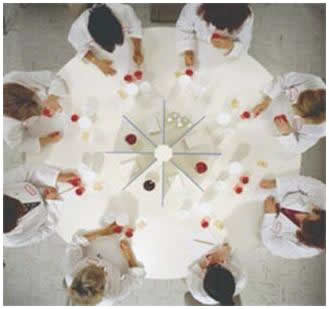- compare similarities/differences in a range of dishes/products
- evaluate a range of existing dishes/food products
- analyze food samples for improvements
- gauge responses to a dish/product, e.g. acceptable or unacceptable
- explore specific characteristics of an ingredient or dish/food product
- check whether a final dish/food product meets its original specification
- Provide objective and subjective feedback data to enable informed decisions to be made.
Why Use Sensory Analysis to Evaluate Food Products?
- Shelf-life studies
- product matching
- product mapping
- specification and quality control
- product reformulation
- measuring taint and off odour
- assessing product quality
- market viability
Where and how can the evaluation be conducted?
- Noise level should be kept low
- Room should be free of foreign odors
- Testing are should be well lit and ventilated
- Testing area should be easy to clean and disinfect (sanitation)
- Temperature and relative humidity should be constant and controllable
- Round table is used mostly for product development (e.g. launching new product; change in product formulation)
- Booths are widely used to provide an environment that prevents panelists from being distracted
and interacting with other panelists
Who can be the panel members?
- Panelists (participants) can be trained to evaluate specific products (odor, taste, texture, and or visual evaluation)
- At time before training panelists are screened for sensitivity in order to remove from the group of panelists people that may not have the ability to perform the sensory evaluation
|
 |

